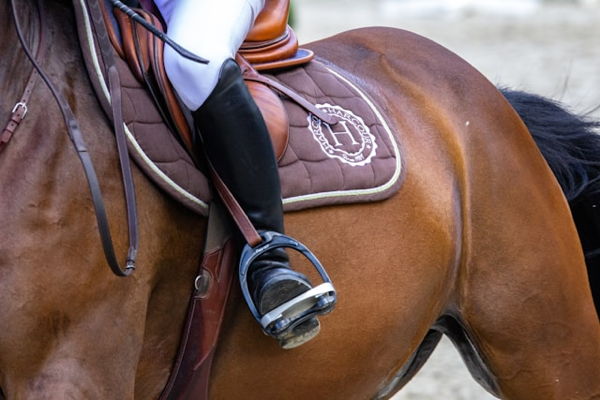 |
RacingBetter News |
| Wednesday 26th June 2024 | |
Taking up horse riding as a hobby? Here are the possible dangers you should be aware of
Horse riding is a rewarding hobby that people of all ages can enjoy. Naturally, when you’re an adult, you might feel like the time has passed for you to learn new things, but there are many people in their 30s and 450s who decide that they are finally financially secure enough to give such a complex pastime some more of their time. In fact, some people only begin after retirement, as it allows them to maintain fitness levels, be active and have a purpose. Many become so engrossed in the hobby that they end up buying their own horse.
And horse riding is not just fun; it can also be a very good workout, so apart from the recreational aspect, you also get the health benefits that come with working out. However, if you’re just getting started and are excited to hop in the saddle, you should also know that, just like in the case of other sports, there are inherent risks that come with equestrianism as well. Being aware of them will allow you to stay safe and know how to proceed in case you become injured in order to have a complete recovery.

The horse
Horses are clever animals with a keen sense of navigational intelligence and are able to pick up cues, different moods, and complex indications and commands. While the latter will most likely require some time and training, it can definitely be achieved if you’re willing to work with the horse and give it your time, attention and compassion. Horses are also very large and powerful prey animals, meaning they have very well-developed fight-or-flight instincts. They are easily frightened by external stimuli, which can cause them to move swiftly and unexpectedly, something that can inadvertently cause the rider to become injured.
When you’re in the saddle, your head could be as much as 4 metres from the ground while the horse is going at a speed of approximately 65 km/h. These conditions make it so that injuries can be quite severe, leading to life-altering disability and even fatalities, but there are also many cases of relatively mild impairments as a result of falls, which can typically be treated with minimal intervention. According to research, you’ll need somewhere around 100 hours of experience in order to reduce your risk of injury, so take things slowly and don’t rush into anything too risky or complicated when you’re unprepared.
The equipment
Wearing the adequate equipment when training is just as crucial in equestrianism as in any other sport. A helmet is an absolute must since it can reduce your likelihood of sustaining a serious head injury if you happen to fall while riding. If you weren’t provided with one during your lessons and became injured as a result, you can file a compensation claim that allows you to get remuneration for the physical, psychological and financial damages you may have sustained due to your injury. Depending on the extent of the difficulties you face, the amount you can receive in compensation will differ.
Jodhpurs, the standard trousers worn for horse riding, get their name from the Indian city of the same name and are an adaptation of the traditional clothing worn in the Indian subcontinent. They are made from stretch fabric that allows you to move freely while also being supportive. The riding top and base layers you should use include polo shirts and fleeces with moisture-wicking properties. Remember that they should fit you comfortably as well, as something too tight will feel restricting, but a baggy fit might make your movements and reaction times slower.
As for footwear, leather boots are a classic choice, but canvas boots work just as well for everyday riding.
Injuries
Head injuries are, unfortunately, quite common among equestrians. Even if they seem mild, these injuries must be evaluated by a physician as soon as possible to rule out any potential complications, such as internal bleeding. The most typical symptoms are confusion, headache, blurred vision, nausea and dizziness. In extreme cases, emergency surgery is necessary to alleviate swelling and correct any structural damage that could have occurred, such as skull fractures. This is precisely why wearing a helmet is essential and can save your life, with studies showing that riders wearing them are five times less likely to experience a traumatic brain injury.
However, after a helmet has sustained an impact, it becomes structurally weakened by default, even if no structural damage is visible. Even if there’s no accident, helmets should still be replaced every three to five years, with the specifications differing depending on the manufacturer. Most of the injuries sustained during horseback riding occur in the upper half of the body, so besides the head, the chest, arms and clavicles can be at risk as well. Falls are the most likely culprit in these situations as well, since you’re likely to crush any of the bones located in this area by dropping to the ground while the horse is going at high speed.
Leg fractures or dislocations are likely to occur as well, and although rare, they tend to be quite severe and require lengthy recovery times. Although somewhere between 60 to 80% of all equestrian injuries occur as a result of falling from the saddle, a rarer but no less serious type involves being kicked by a horse, an event that can lead to organ damage. Just as in the case of head injuries, if you become the victim of any of these, immediate medical attention is a must you shouldn’t postpone.
While riding a horse is indeed a great pastime activity and a great way to combine a workout with the unique feeling of bonding with an animal, being aware of the injuries you could sustain is crucial as it allows you to figure out the best ways to stay safe. Wearing the right equipment will reduce the incidence of injuries and decrease their severity if they occur. Remember to trust the learning process and don’t bite off more than you can chew. If you’re not adept at riding and are just starting to develop your skills, you must stick with the things you can do, or you risk wounding yourself.







